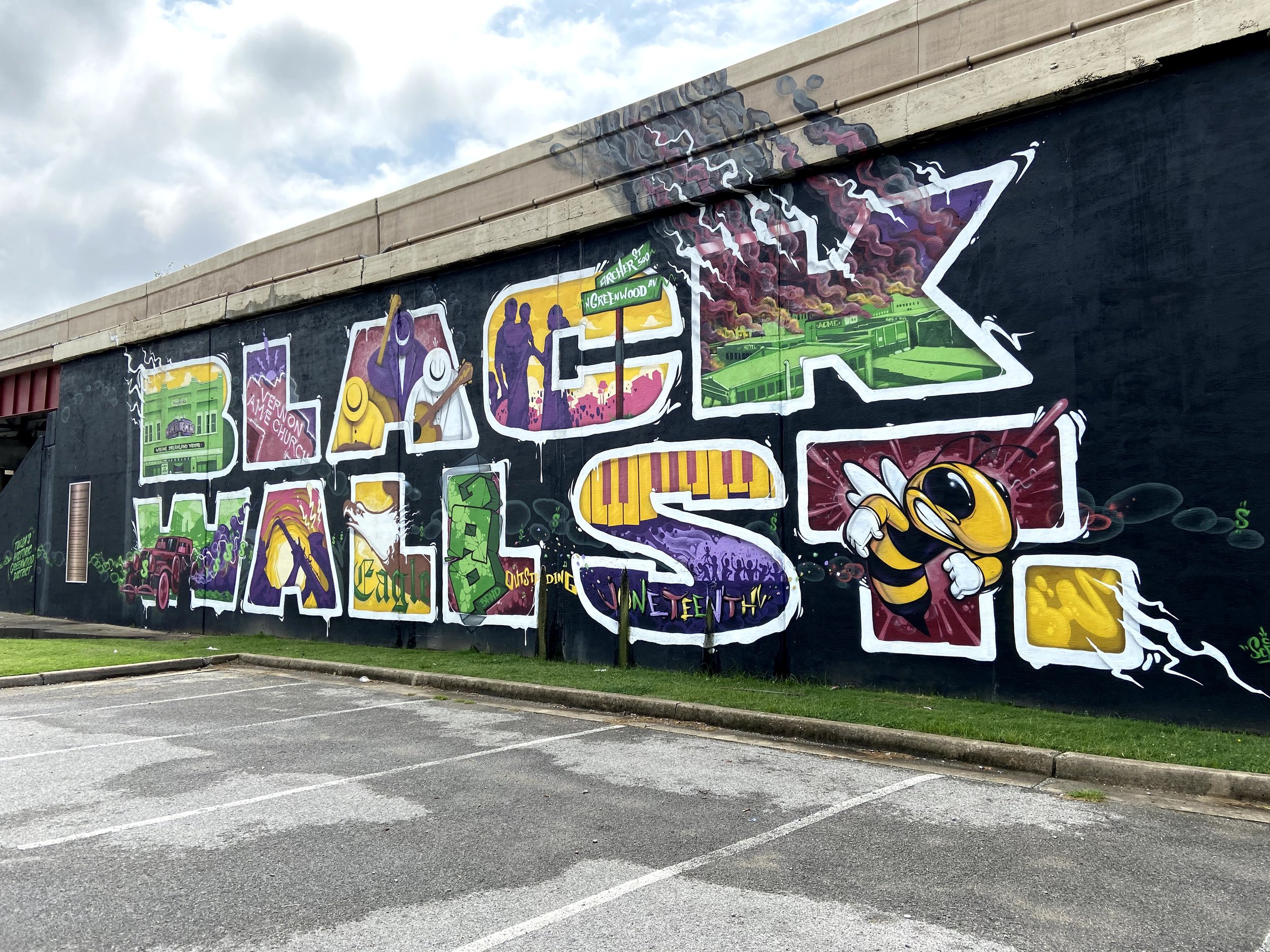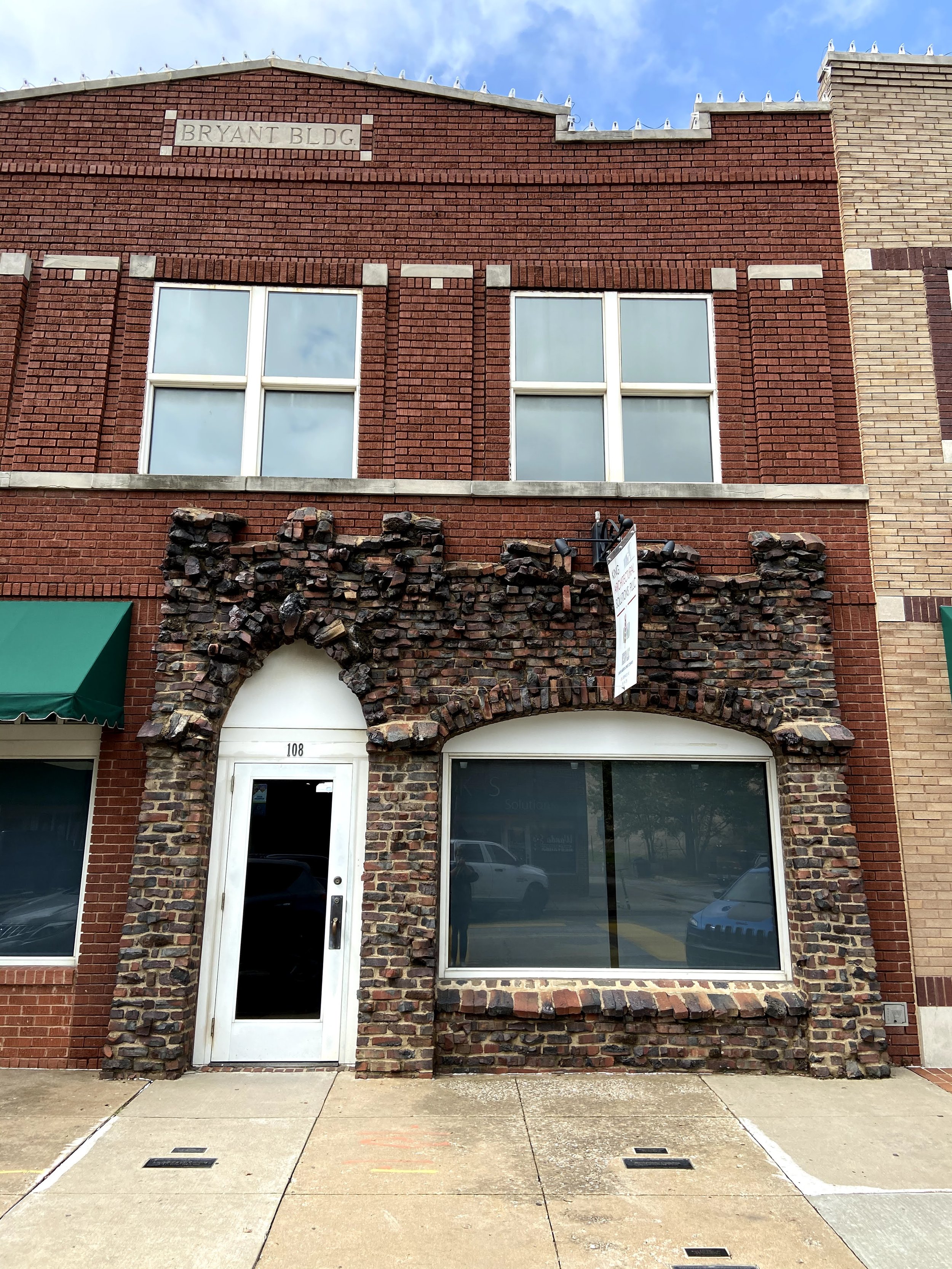Midway Through a Road Trip Arkansas to Oklahoma
You know you’ve left Arkansas once the wooded Ozark hills and valleys fall away into endless prairie. Life withers into meager shrubs and wild yellow grasses. I rolled down my window and choked on the scent of hay and cow chips. It smelled like the Midwest.
Unlike their fellow Midwesterners, Oklahomans believe in speed. I made it to Tulsa in three hours – my shortest time yet on the trip.
Tulsa detours from I-40, but I chose it because of HBO’s limited series Watchmen. As enjoyable as the series was, never had a medium brought to life the horrors of racial violence. And as an entertained bystander, I had a moral obligation to pay my respects to the real victims from 99 years before.
I felt apprehension on my drive in, the same kind before I entered Dachau. But whereas Dachau was preserved, Black Wall Street was diminished.
All that remains at the corner of Archer Street and Greenwood Avenue is a half-block of weathering brick buildings. I walked the sidewalk and read the brass plaques memorializing the razed businesses; when close enough to the brick edifices I detected soot patterns as from a fire still blazing a century later. I entered the center of Greenwood Ave. to observe the yellow Black Lives Matter type on the asphalt and looked back at the coming storm of housing and urban renewal projects.
I travelled beneath the overpass to the ba-dum ba-dum rhythm of the cars travelling I-244. I took in the wide-open sight of this unrecovered edge of Black Wall Street. At one end was the refreshed and vibrant University of Oklahoma; and at the other the weary Vernon African Methodist Episcopal Church, a survivor of 1921, with a soup-kitchen line circling the corner.
The humid air felt stagnant and decayed. There wasn’t much else to see.
On my way back to the car I stopped by the Black Wall Street Memorial Gift Shop, curious since the pandemic shuttered the Greenwood Cultural Center.
The pop-up shop, filled with out-of-the-box clothing racks and commemorative clothes and cups and DVDs, belonged to a Black man named Cleo. He personally welcomed me in. I related my road trip and why I came to Tulsa. Then we got to what Cleo called the ‘white elephant in the room’.
Cleo gave me a history of Greenwood in chrysalis, emaciated by enduring white supremacy. Ninety-nine years ago Greenwood faced bullets; today it faces red tape. The neighborhood was redlined; rezoned for industrial use; split in half by I-244; denied landmark status and restitution. Today Greenwood stares down the planned redevelopment of the city.
Cleo’s eyes betrayed anger and defeat. He revealed that the Black Lives Matter stencil was painted by good-meaning-white-folks, then just as quickly targeted by white supremacists who burned rubber on the stencil no matter the time of day.
He told me that he didn’t blame me. I told him to blame every white person, even well-meaning ones.
I bought a shirt to support his business, and in some way ease my conscience. I drove away from Greenwood in search of uncomplicated good vibes. TripAdvisor recommended mainly banal, notable, top-rated sights: places preserved from time and intention. I searched all day for something comforting, but it was impossible to ignore the stark realities. Everywhere else there were pristine lawns, homelessness far away, not a hint of city riffraff. Beautifully preserved homes of arsonists.
As a chore I took some pictures of art deco office buildings and churches, the Center of the Universe, the abandoned Abundant Life building.
When I finished my chores Tulsa was in twilight. I dined on Brownies’ Burgers in a parking lot and slept poorly at the hotel.













